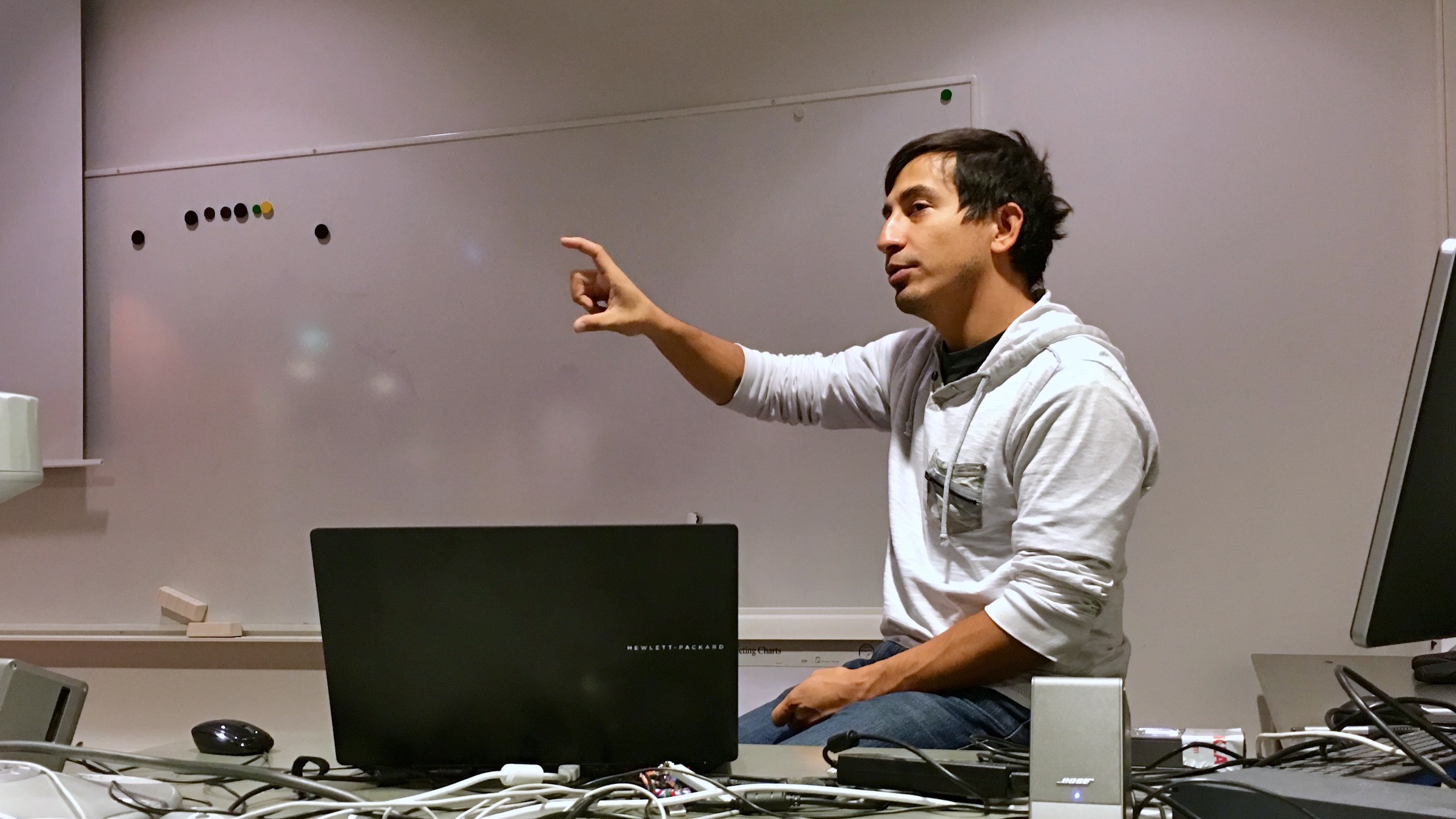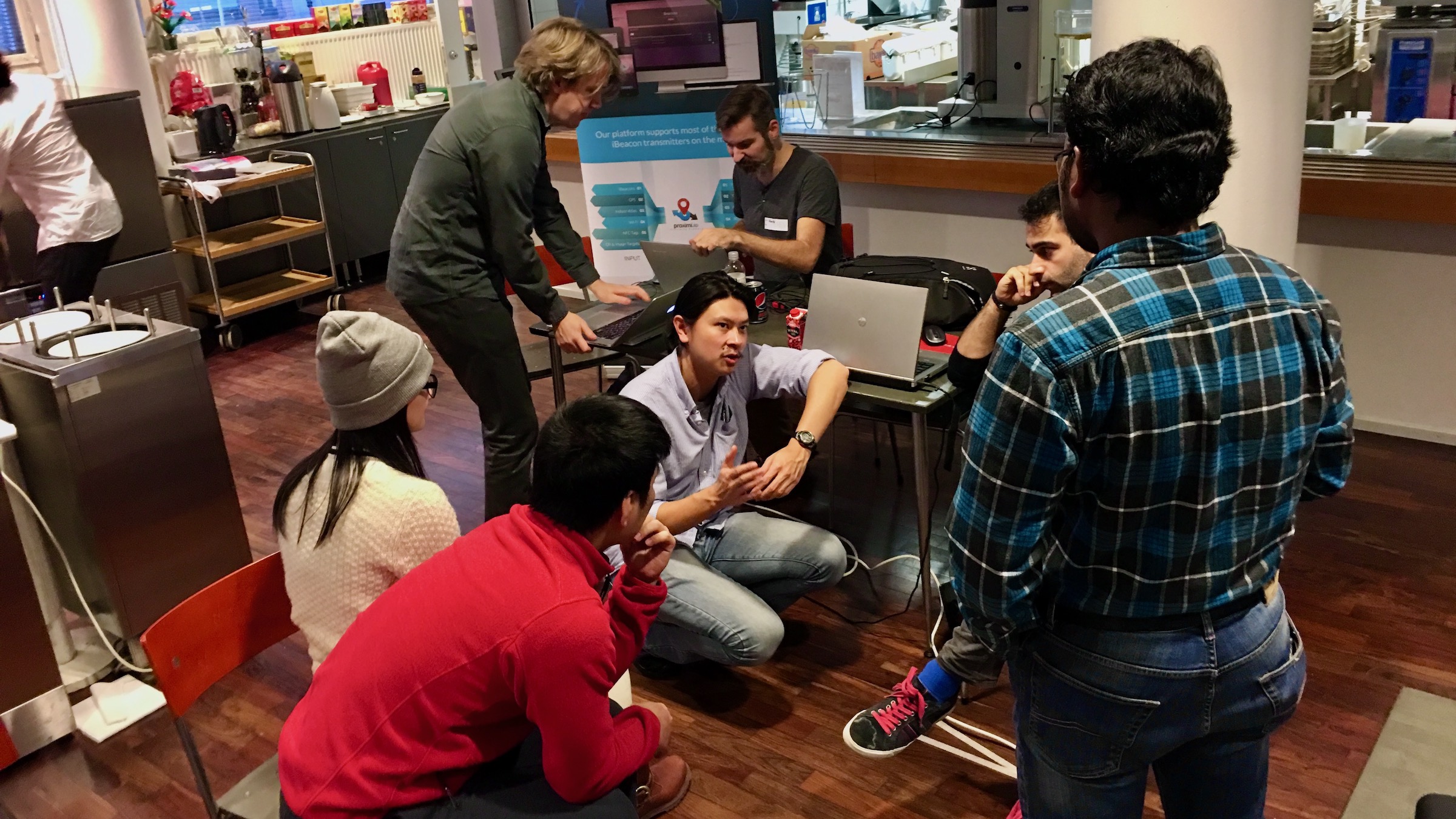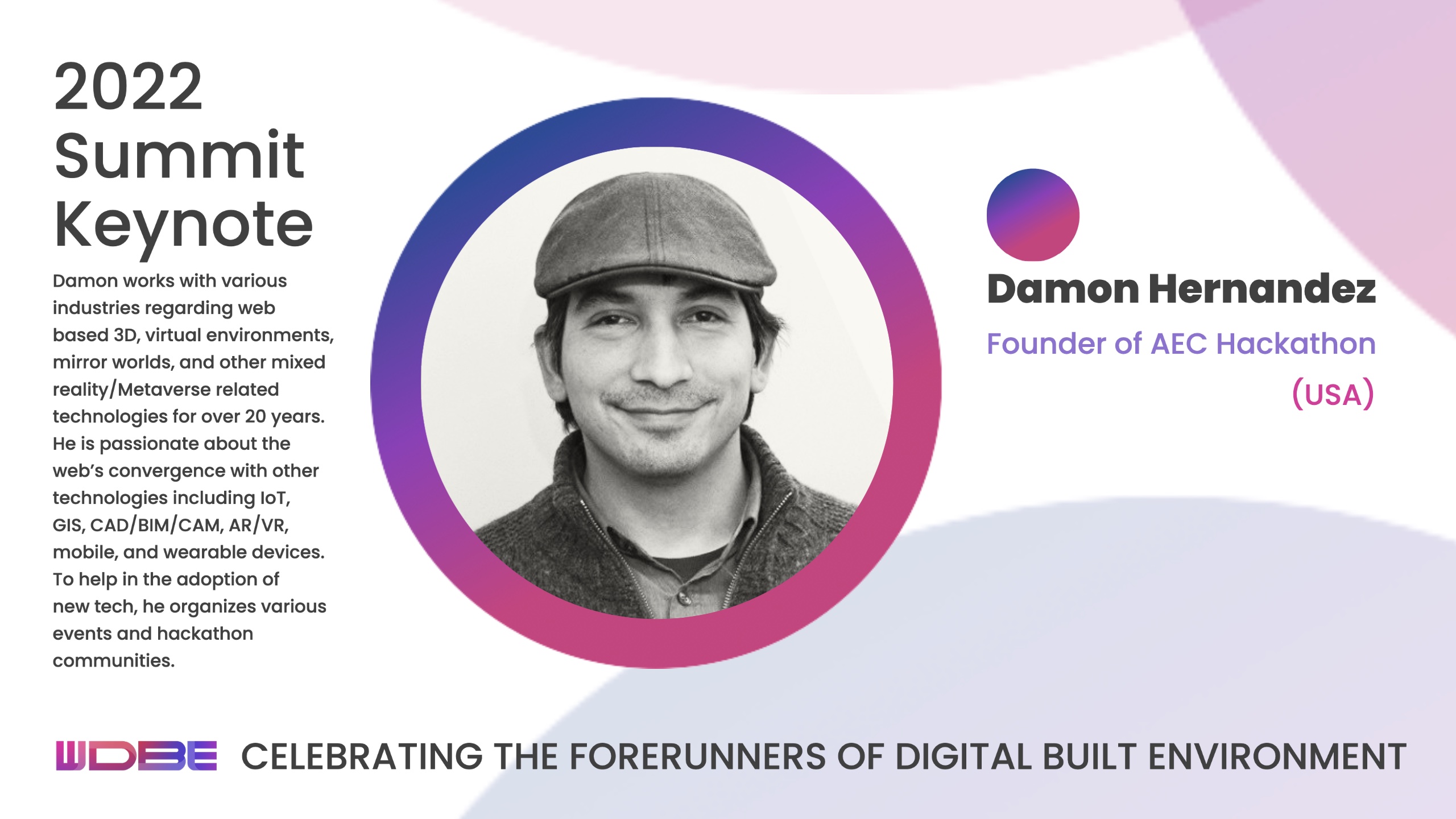I sat down with Damon Hernandez in Helsinki at Urban3, the home base of the Finnish digital built environment ecosystem. We discussed the AEC Hackathon and Damon’s passion for connecting the digital and physical worlds.
I initially met Damon Hernandez in November 2015 at the first AEC Hackathon in Finland. The hackathon followed the trademark script for such events: a weekend over which hack teams solve AEC industry problems by leveraging new technologies. The atmosphere was enthusiastic, inspiring, and thought-provoking—similar to what I experienced again when I attended later AEC Hackathons.
The event lets people from various fields and backgrounds collaborate, even if they’d be fierce competitors during weekdays. It’s no wonder the hackathon has grown into a global community of innovators since its inception in Silicon Valley in 2013. As a co-founder and executive director, Damon is always there, encouraging and supporting the participants and ensuring that everything runs smoothly.
This time, however, Damon is staying in Helsinki for a different reason: he’s participating in the 90-Day Finn program by Helsinki Partners, a city-owned nonprofit supporting international businesses and helping them succeed in Helsinki. As a three-month resident, Damon interacts with local technology and business communities and creates new connections between Finnish and US individuals and companies.

A former Texan who has lived in San Francisco for about 16 years, Damon has been a 3D web designer, Web3D Consortium’s Student Director, a tech startup founder, and a product manager at Samsung Electronics, to mention just a few of his occupations.
“I’ve been driven for 22 years by this idea of where the real and the digital meet,” Damon says. “Really looking at how we can apply these interactive 3D technologies and things that I think my generation was exposed to as kind of the first wave of gamers.”
Damon remembers the seminal incident that made him ditch the idea of law school. It was the discovery of Neil Stephenson’s 1992 sci-fi novel Snow Crash. The book made headlines last year as the origin story of the now popular concept of the “metaverse.”
Damon does not see the metaverse as a proprietary playground of a particular company or an immersive, disconnected 3D world. He reminds us that all the flavors of extended reality technologies have the word “reality” in them.
How real and digital could meet
In 2006, Stanford Research Institute organized the Metaverse Roadmap Summit. It published a roadmap that defined the metaverse “as the convergence of virtually enhanced physical reality and physically persistent virtual space. It is a fusion of both while allowing users to experience it as either.” Damon favors this approach.
“The built environment, it is the stage for which all of this digital content will live, and we will interact with. We cannot go completely digital because you’re in a physical room; you’re in a physical space. You’re doing your VR, your AR somewhere,” Damon says. “Immersion to me isn’t just about having a monitor slapped in front of your eyeballs.”
He imagines a future in which IoT protocols like Matter enable rich experiences in your built environment. You could, for example, play a game on your TV, and when you score, the room reacts by flashing lights on and off. Or you could have a virtual pet running around your house and demanding care like a Tamagotchi.
Hacking construction thinking
In 2007, Damon became involved with fabricators and homebuilders, which shifted his focus more to the built environment. He began to wonder whether you could apply 3D and immersive technologies to the construction and real estate sectors.
As a result of his interest in construction, Damon co-founded IDEAbuilder in 2007. It is a company that uses robotic manufacturing and immersive technologies to build timber structures and homes in the United States. Damon was the company’s Director of Technology for 14 years.
In 2013 Damon and his construction sector friends came up with the idea for the AEC Hackathon.
“Someone asked me one time, ‘What is the AEC Hackathon about?’ And what I really found is that we’re hacking thinking first,” he explains. “We cannot expect new ways of doing things or thinking about things if we do not change the way that we perceive things.”


Learning from Finland
Damon thinks Finland and Singapore are at the forefront of built environment technology. He’s incredibly excited about the Finnish approach to openness and interoperability through standards. He’s also fond of how gaming, building, and other industries work and talk together here.
“So as a Finn here, I hope to really help bridge more of those communities, I think, with, of course, Silicon Valley and then others, but really see how we can merge the real world and the digital to create the 3D world part of World Wide Web.”
Damon will take a short break from his stay in Finland. The next AEC Hackathon will take place in Austin from October 14 to 16. Two weeks after that, the hackathon kicks off in Copenhagen. The previous Danish event attracted attendees from 31 countries, which shows how valuable a hackathon can be in terms of creating connections, exchanging ideas, and widening perspectives.
Before those events, you can meet Damon on September 29 at the WDBE conference’s second day in Tallinn, where he’ll give his keynote speech.
You can listen to Damon’s full interview on the WDBE Talks podcast.
View the original article and our Inspiration here


Leave a Reply